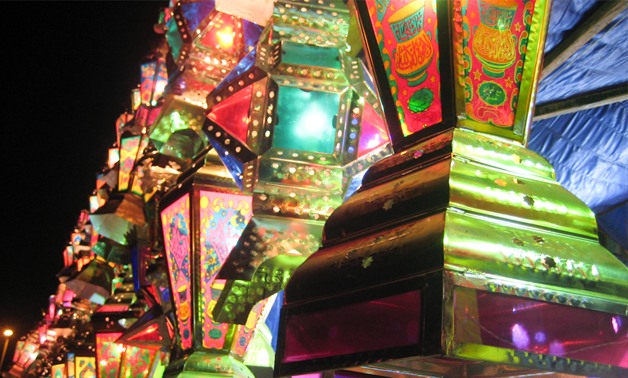
Traditional Ramadan fanoos - Mohd Tarmizi via Flikr
CAIRO - 20 June 2017: Decorations for Eid al-Fitr, the celebration Muslims long for year-round, are not complete unless food and fashion are a part of the equation.
Eid al-Fitr commemorates the end of the holy month of Ramadan, during which Muslims fast from sunrise to sunset. The festivities of the feast begin with the hunt for new outfits for Eid to welcome the holiday with open arms. Eid celebrations officially commence with the rise for the dawn prayer on the first day after Ramadan and continue for three days.

These festivities include visiting with family and gatherings where food and fashion become the center of attention and remnants of Ramadan are still hanging from the walls. While Ramadan is always associated with the crescent moon, Eid is associated with the star.
Graphic and visual artist Sara Karim believes that “the hype created for Ramadan surpasses that of Eid,” and told Egypt Today how “We celebrate the month of Ramadan so much that we have nothing left for Eid.”
Every Ramadan the streets of Cairo are filled with endless chains of light and Ramadan lanterns, known as “fanoos,” that leave the night sky as bright as day. These lights only increase the intensity of the celebration.
Then there’s the surplus of “khayamiya,” a popular textile inspired by Islamic and Arabic patterns. Khayamiya is made from cotton thick enough to serve as a protective layer from the dust, heat and dry climate of the environment. Khayamiya patterns have been reproduced on many different textiles and materials including lanterns, cushions and tea sets.
Often, however, the intricacy and individuality of these patterns are overlooked, graphic designer Mena Moussa told Egypt Today. The patterns “are not respected for their art form and unique calligraphy,” she said. “People see it everywhere [and] they think all Khayamiya patterns are the same.”
“They don’t realize that each represents a different culture,” she added.
The reproductions and decorations made from khayamiya are overwhelming during the month of Ramadan, which, although they bring with them the feeling of Ramadan, may not be a good thing. In the end, they pull some of the specialness and hype away from Islam’s most important feast - Eid al-Fitr.

Comments
Leave a Comment